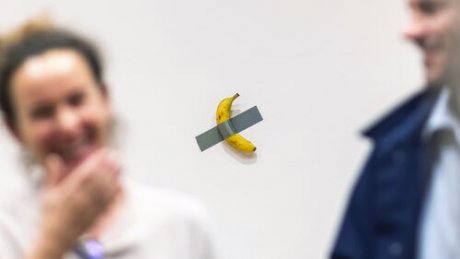Amphipolis: The secret beyond the third entrance
Archaeologists' attention is on the colorful trace distinguished through the hole on the third wall - Three dimensional display of the tomb

The images of the new findings brought to light by excavations at the tomb of Amphipolis, are causing awe to the world, in both ordinary citizens and scientists.
Day to day scenarios for the identity of the dead in the tomb are multiplying, and historians and archaeologists are constantly changing opinion. Yesterday, Tuesday, was published the first axonometric design which is a representation of the funerary monument of Amphipolis by the architect M. Lefantzis.
The diagram shows the two internal walls, where found the Sphinxes and the Caryatids, while the findings are mapped to the points where they were found, giving us a more comprehensive picture of the progress made in the excavation so far.
However, archaeologists and researchers seem more puzzled with regard to the dating of the monument.
What lies behind the third wall?
While, most global, public and international media remain in agony watching the newsletters of the Ministry of Culture, archaeologists have already a comprehensive picture of what's behind the third internal wall. The multidisciplinary team and the head of the excavation, Mrs. Peristeri, do not reveal what is hidden behind the wall with the two caryatids. However, from the photo with the rectangular piece of the roof, which was found fallen in the second anteroom, in the hole in the third internal wall, is visible a colorful sign in the dark.
The Leos and the Caryatids
In 1912 during the First Balkan War, the Greek soldiers observed the existence of marbles into the bushes on the west bank of the river Strymon. The first findings were pieces of the marble base of the lion of Amphipolis, which were found during the execution of drainage works in the area. It took many decades in order Leo to link with the tomb, ie the make the link between all of the pieces found scattered at great distance from the mound. The existence of the tomb of Amphipolis begins to interest the scientific community of archaeologists many years later. In 1953 was made the first cross section in Casta hill, by local residents.
Today, the team of KH 'Antiquities under Mrs. Katerina Peristeri, after two years of deeper excavations in the point which the tomb is located, have revealed findings that enable people to make a variety of more or less reliably, scenarios for the significance of the monument and especially for the identity of the dead who were buried in it. The recent striking finding was two Caryatids that adorn the second entrance to the tomb and has has caused sensation since it is the first time that Kores are identified in a Macedonian tomb.
"Amphipolis may be the tomb of Olympias"
The global community, after the new findings that came to "light" on weekend, follows the Tomb Castes and anxiously awaiting for the next news. The revelation of the Caryatids, except that confirms that some important person is resting since centuries in Amphipolis, strengthens the possibility that the mother of Alexander the Great, Olympias is buried in Casta hill.
In particular, the famous historian and Egyptologist Andrew Chiang, author of "Seeking the tomb of Alexander the Great," said in the Discovery Channel that Amphipolis’s rosettes are like those that decorate the gold coffin found in the tomb of Philip II.
It seems that the rosette is a trademark of its holder "said Chang in Discovery News, who believes that it is likely that the Olympias, the mother of Alexander, is buried in the spectacular tomb.




.jpg)















